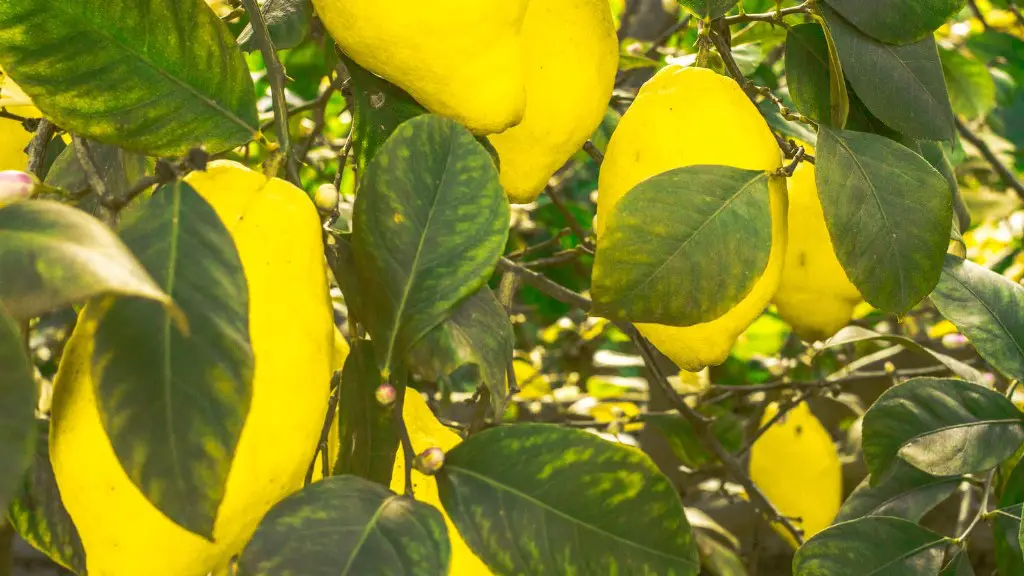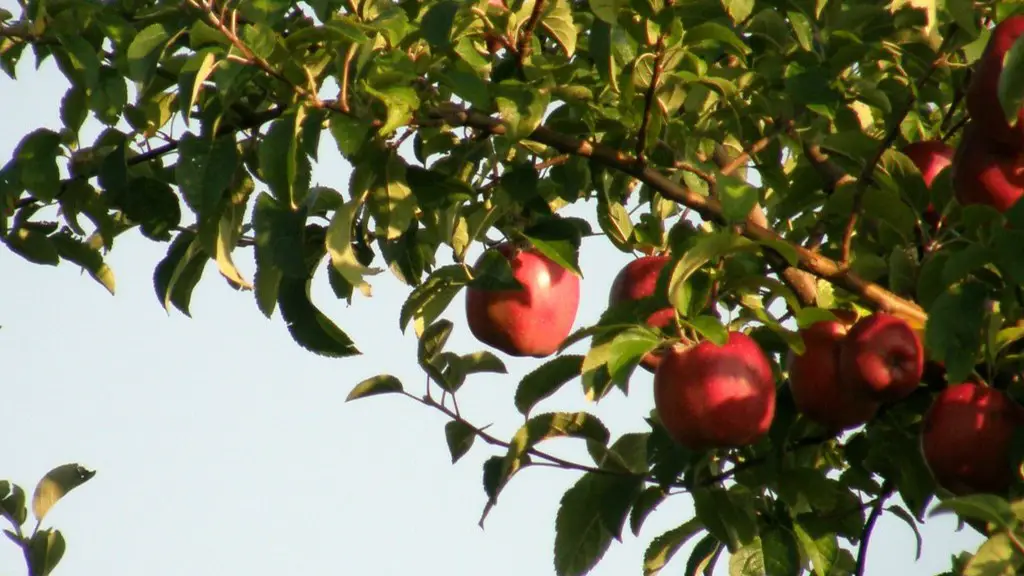Growing lemon trees as a dwarf variety is an attractive option to people who do not have enough room for a full-sized citrus tree. A dwarf lemon tree is ideal for side yards, hedges, container planting in a sunny spot, or small spaces. Luckily, it’s easy to dwarf a lemon tree and take advantage of all the benefits that a small citrus tree can provide. Here, we’ll explain how to successfully dwarf a lemon tree, so you can enjoy sweet, juicy lemons in no time.
The first step to dwarfing your lemon tree is to plant your tree in a container. Doing so will help to restrict the growth of the tree and keep it to a manageable size. Use a pot or container with holes in the bottom to help with drainage and select a potting soil that’s specifically designed for citrus trees.
When planting your tree, be sure to dig a hole twice the size of the plant’s root ball and mix some compost into the soil to give your tree the extra nutrition it needs for healthy growth. Place the plant in the hole and closely fill it in with the surrounding soil.
After your tree is planted, water it well and add mulch around the trunk to a depth of about 3 inches. Mulching is essential because it’ll help to retain moisture, keep weeds at bay, and prevent the roots from getting too hot.
It’s also important to prune your lemon tree regularly. This will help to keep the size of the tree down and encourage it to produce more fruit. Do this by selecting a few of the tallest branches and trimming them with handheld pruners. It’s best to prune every few weeks or months, depending on the season.
Lastly, position your lemon tree in a sunny location that receives at least 6-8 hours of sunlight a day. Lemon trees thrive in full sun, and if your plant is receiving too little, it may struggle to produce fruit and foliage.
Dwarfing lemon trees is an easy and enjoyable process, and with these steps, you’ll be enjoying delicious, homegrown lemons in no time at all.
Essential Tools
In order to successfully dwarf your lemon tree, it’s important to have the right tools on hand. First and foremost, you’ll need a container that’s big enough to hold your tree, but small enough to keep it contained. Choose a pot or container with drainage holes that’s specifically designed for citrus trees. You’ll also need potting soil and compost to give your trees the extra nutrition they need. Handheld pruners are essential for pruning, and it’s a good idea to have a hose or watering bucket to keep your tree hydrated.
It’s important to note that many gardeners have found success using a grow bag for lemon trees. Container growing is often used for planting citrus trees in areas with poor drainage or less-than-ideal soil, and having a grow bag helps to keep the roots of your tree insulated and prevent them from getting too hot.
Another helpful tool is a trellis, which makes it easy to train your lemon tree while controlling its size. While they can be expensive, a good trellis provides the necessary structure to help keep your trees in shape.
Lastly, it’s a good idea to invest in a citrus fertilizer. The minerals in citrus fertilizer can help boost the health of your tree and ensure healthy growth.
Watering Requirements
Lemon trees are quite drought-tolerant and generally only need watering once a week during the dry summer months. In areas with particularly dry climates, however, you may need to water twice a week.
It’s important to make sure your tree is getting enough water, as too little can cause stress and slow growth. The best way to check soil moisture level is by sticking your finger into the top of the soil and seeing how it feels. If the soil feels dry, then it’s time to give your tree a good watering.
Once you’ve established a watering schedule, it’s a good idea to monitor your tree and make sure it’s getting enough water. Signs that it needs more water include wilting or yellowing leaves, slow growth, or a lack of flowers or young fruit.
Additionally, if you live in an arid or hot area, you may want to consider mulching the soil around your tree to help keep the moisture in. Mulch also helps to keep the root of your tree cool, so it’s an essential part of caring for your tree.
Overall, the key to keeping your lemon tree happy and healthy is to make sure it has enough water. As long as you stick to a regular watering schedule, your tree should thrive and produce plenty of lemons.
Feeding Requirements
Lemon trees need regular feeding in order to produce abundant and juicy fruit. Typically, a good citrus fertilizer should be applied to your tree in the spring and summer months, as these are the main times of growth for citrus trees.
When selecting a fertilizer, be sure to read the package instructions carefully and always follow the manufacturer’s directions. Generally speaking, you should use a balanced 10-10-10 or a citrus-specific 8-3-9 fertilizer.
Additionally, mulch around the tree and incorporate compost or manure into the soil to help give your tree the extra nutrition it needs. These added organic materials can help enrich the soil and improve the overall health of your tree.
It’s also important to keep an eye on your tree’s foliage and make sure it’s healthy. If you notice any yellowing leaves, this may be an indicators that your tree isn’t getting enough nutrition and may need a fertilizer boost.
Overall, regular fertilizing can help to ensure your tree grows healthy and strong and produces plenty of delicious lemons.
Pruning Requirements
Pruning is an essential part of maintaining your lemon tree and keeping it from growing too large. Pruning also helps encourage healthy growth and increases the yield of your tree.
When pruning, select the tallest branches and cut them back with a pair of handheld pruners. This will help to shape and contain your tree, as well as promote fruiting. You should prune in the spring and around midsummer to keep the size of your tree manageable.
It’s also important to note that over-pruning your tree can cause it to become weak and unhealthy, so be sure to only prune what is necessary. Additionally, it’s best to leave some foliage on the branches, as this helps to protect the tree from extreme temperatures and keep the bark from drying out.
Finally, be sure to dispose of all the clippings. Pruning can attract pests and diseases, so it’s important to get rid of all the debris in order to keep your tree healthy and thriving.
Ultimately, pruning is an important part of keeping your lemon tree in shape, so be sure to do it on a regular basis.
Fruiting Requirements
Growing lemons requires a bit of patience, as lemon trees can take up to a few years before bearing fruit. But, with proper care, patience, and dedication, your tree should start to produce fruit in 1-2 years.
Generally speaking, lemon production is at its peak during the summer and fall months, so be sure to keep the soil around your tree moist during these times. Also, be sure to fertilize your tree regularly and prune it when necessary in order to give it the best chance of producing fruit.
If you’ve done everything right and your tree is still not bearing fruit, it’s a good idea to check the blooms of your tree. If they are not developing, this could be a sign that your tree is not getting enough bees or pollenators. In this case, it’s best to plant other pollinator-friendly plants around your lemon tree. This will provide the necessary pollinators to help your tree bear fruit.
Overall, with the right care and attention, your lemon tree should start to bear fruit in no time at all.





